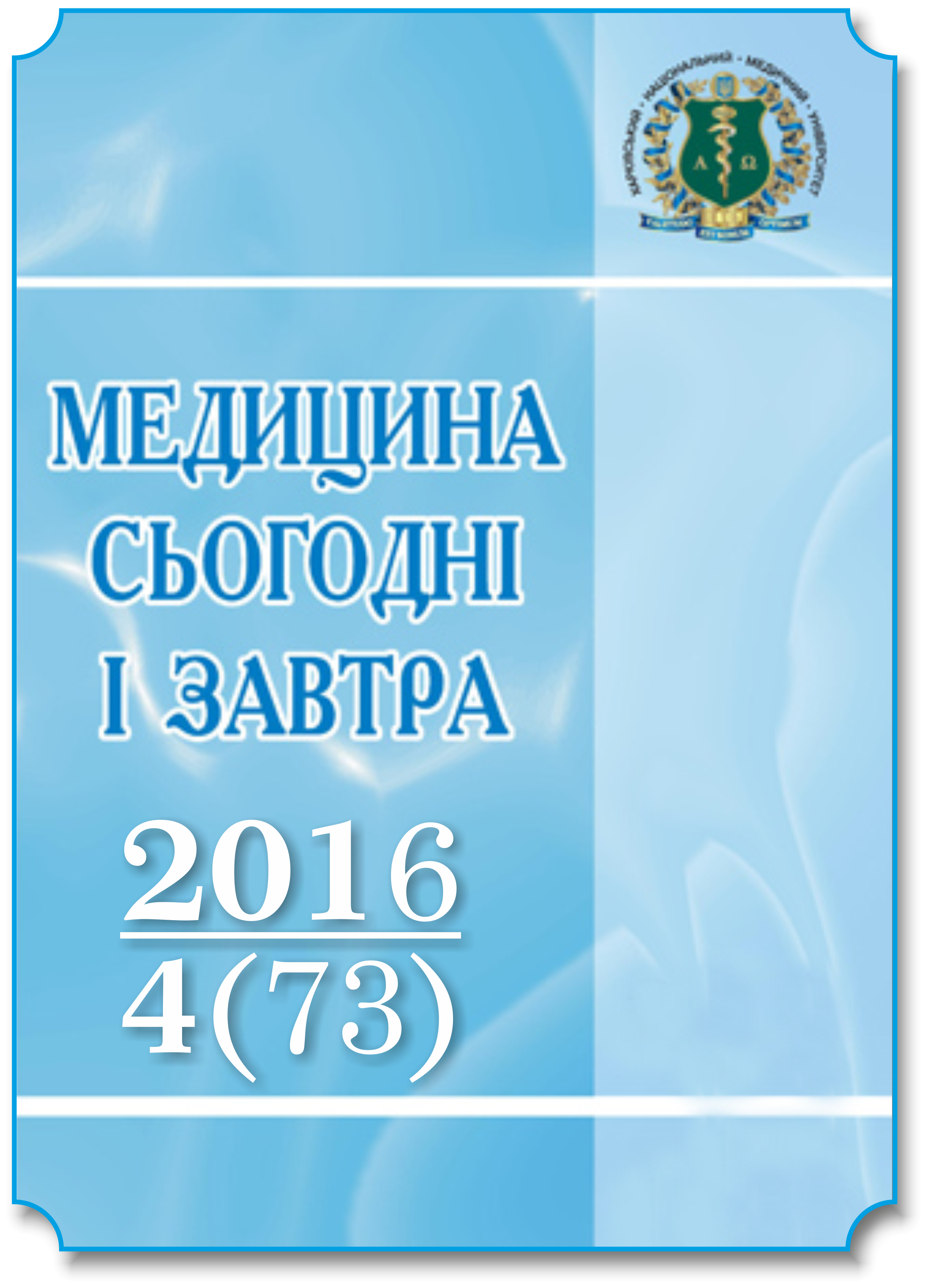Abstract
To assess influence of azilsartan medoxomil on clinical blood pressure, 24-hours blood pressure (24BP) and central aortic blood pressure in patients with mild to moderate hypertension. Twenty-one patients with mild to moderate essential hypertension were enrolled. Dose of azilsartan medoxomil was gradually increased until maximum 80 mg once-daily. Follow-up of the study amounted to 6 months. Clinical blood pressure, central aortic blood pressure measurement and 24-hours blood pressure monitoring were measured before on each visit. Clinical SBP/DBP decreased by 21,8 / 10,2 mm Hg – from (152,50±2,13/94,3±1,9) to (130,7±1,1/84,1±1,2) mm Hg (p<0.005). There were significant reduction of 24-SBP and 24-DBP, the difference were (14,3±0,8) and (9,8±0,4) mm Hg respectively, p<0,0001. Dose-dependent effecasy of azilsartan medoxomil on central aortic blood pressure was confirmed: decrease from initial central aortic blood pressure (136,00±3,13) to (119,00±2,92) mm Hg, p<0,005, was observed. An outcome of the study shows high efficiency of azilsartan medoxomil in reduction of clinical BP, 24-hours blood pressure and central aortic blood pressure in patients with mild to moderate hypertension.
References
A comparative risk assessment of burden of disease and injury attributable to 67 risk factors and risk factor clusters in 21 regions, 1990–2010: a systematic analysis for the Global Burden of Disease Study 2010 / S. Lim, A. Flaxman, G. Danaei [et al.] // Lancet. – 2012. – V. 380 (9859). – P. 2224–2260.
World Health Organization. A global brief on hypertension Geneva, World Health Organization, 2013. – Резим доступа:
http://apps.who.int/iris/bitstream/10665/79059/1/WHO_DCO_WHD_2013.2_eng.pdf?ua=1
De Caterina A. Critical evaluation of the efficacy and tolerability of azilsartan / A. De Caterina, A. Harper, F. Cuculi // Vasc. Health Risk Manag. – 2012. – V. 8. – P. 299–305.
Effects of age, sex, and race on the safety and pharmacokinetics of single and multiple doses of azilsartan medoxomil in healthy subjects // R. Harrell, A. Karim, W. Zhang, C. Dudkowski // Clin Pharmacokinet. – 2016. – May; v. 55 (5). – P. 595–604.
Single-center evaluation of the single-dose pharmacokinetics of the angiotensin II receptor antagonist azilsartan medoxomil in renal impairment / R. Preston, A. Karim, C. Dudkowski [et al.] // Clin. Pharmacokinet. – 2013. – May; v. 52 (5). – P. 347–358.
Antihypertensive efficacy of the angiotensin receptor blocker azilsartan medoxomil compared with the angiotensin-converting enzyme inhibitor ramipril / G. Bönner, G.L. Bakris, D. Sica [et al.] // J. Hum. Hypertens. – 2013. – Aug; v. 27 (8). – P. 479–486.
Angeloni E. Azilsartan medoxomil in the management of hypertension: an evidence-based review of its place in therapy / E. Angeloni // Core Evid. – 2016. – V. 11. – P. 1–10. – Режим доступа: http://www.ncbi.nlm.nih.gov/pmc/articles/PMC4829189/#b14-ce-11-001
Unique binding behavior of the recently approved angiotensin II receptor blocker azilsartan compared with that of candesartan / S. Miura, A. Okabe, Y. Matsuo [et al.] // Hypertens. Res. – 2013. – Feb; v. 36 (2). – P. 134–139.
Effects of the angiotensin receptor blocker azilsartan medoxomil versus olmesartan and valsartan on ambulatory and clinic blood pressure in patients with stages 1 and 2 hypertension / W. White, M. Weber, D. Sica [et al.] // Hypertension. – 2011. – Mar; v. 57 (3). – P. 413–420.
A meta-analysis of randomized controlled trials of azilsartan therapy for blood pressure reduction / H. Takagi, Y. Mizuno, M. Niwa [et al.] // Hypertens. Res. – 2014. – May; v. 37 (5). – P. 432–437.
Azilsartan compared to ACE inhibitors in anti-hypertensive therapy: one-year outcomes of the observational EARLY registry / K. Anselm, P. Bramlage, A. Sebastian [et al.] // BMC Cardiovasc. Disord. – 2016. – V. 16. – P. 56.
The renin-angiotensin receptor blocker azilsartan medoxomil compared with the angiotensin-converting enzyme inhibitor ramipril in clinical trials versus routine practice: insights from the prospective EARLY registry / P. Bramlage, R. Schmieder, A.K. Gitt [et al.] // Trials. – 2015. – V. 16. – P. 581.
Kajiya T. Clinical benefits of azilsartan beyond blood pressure lowering? / T. Kajiya // Cardiovasc. Drugs Ther. – 2014. – Aug; v. 28 (4). – P. 293–294.
For estimating creatinine clearance measuring muscle mass gives better results than those based on demographics / A. D. Rule, K. R. Bailey, G. L. Schwartz, et al. // Kidney Int. – 2009. – V. 75 (10). – P. 1071–1078.
Comparison of the novel angiotensin II receptor blocker azilsartan medoxomil vs valsartan by ambulatory blood pressure monitoring / D. Sica, W. White, M. Weber [et al.] // J. Clin. Hypertens. (Greenwich). – 2011. – Jul; v. 13 (7). – P. 467–672.
Olmesartan improves pulse wave velocity and lowers central systolic blood pressure and ambulatory blood pressure in patients with metabolic syndrome / U. Raff, S. Walker, C. Ott [et al.] // J. Clin. Hypertens. (Greenwich). – 2015. – Feb; v. 17 (2). – P. 98–104.
Atenolol and eprosartan: differential effects on central blood pressure and aortic pulse wave velocity / Z. Dhakam, C. McEniery, J. R. Cockcroft [et al.] // Am. J. Hypertens. – 2006. – Feb; v. 19 (2). – P. 214–219.
